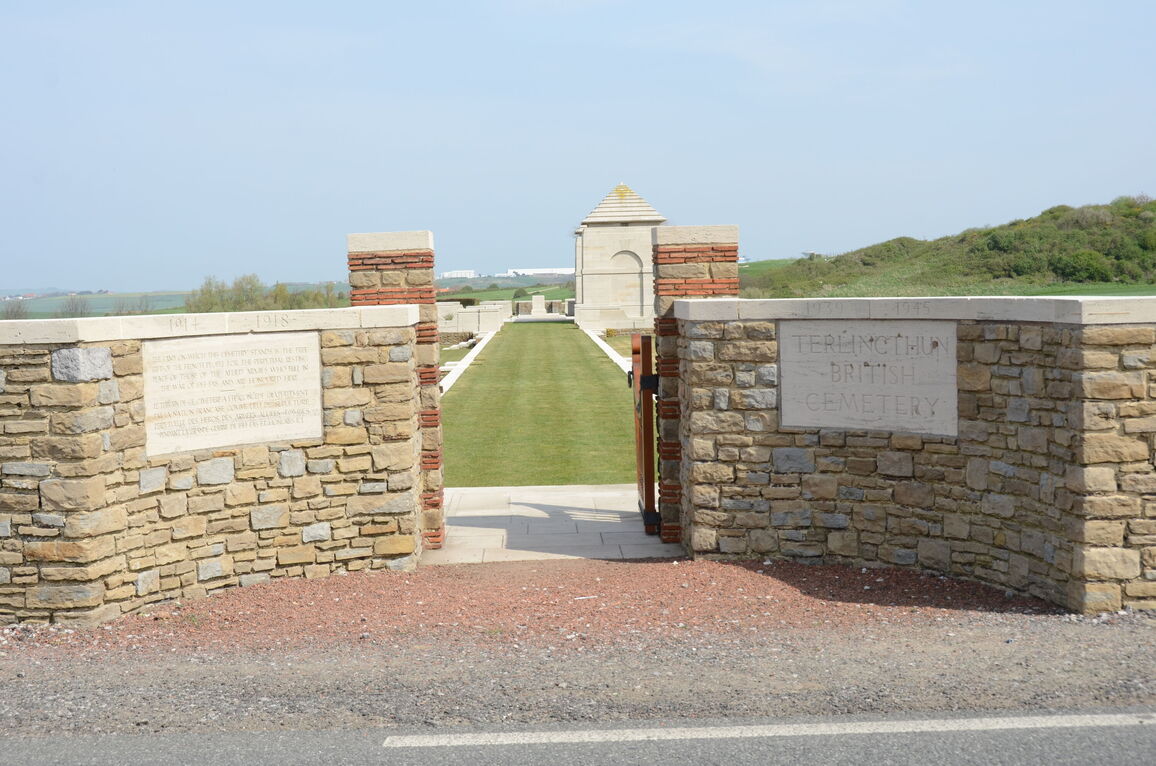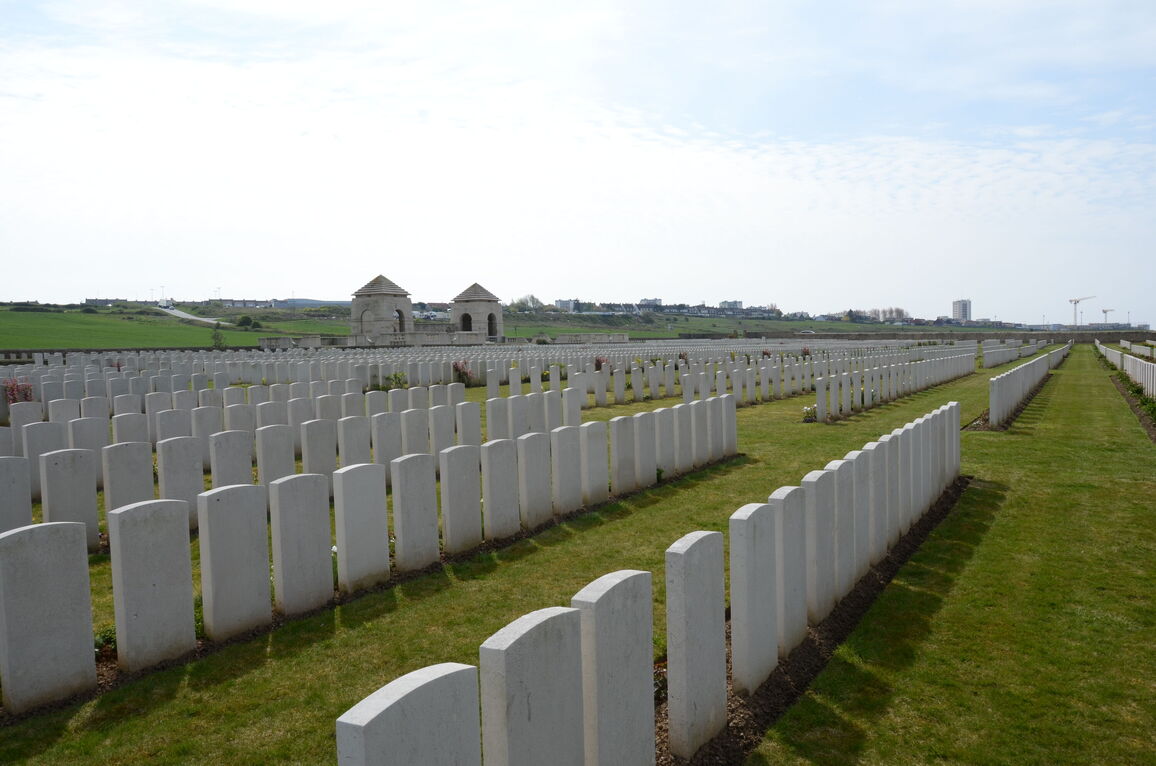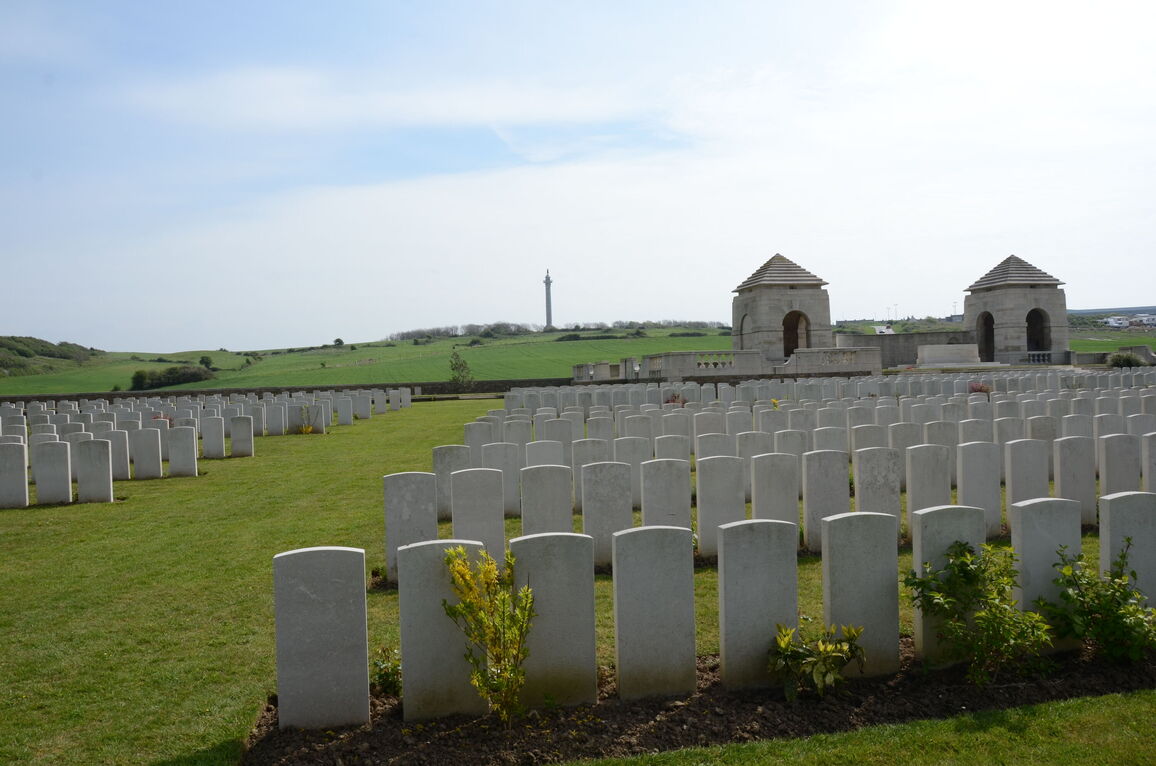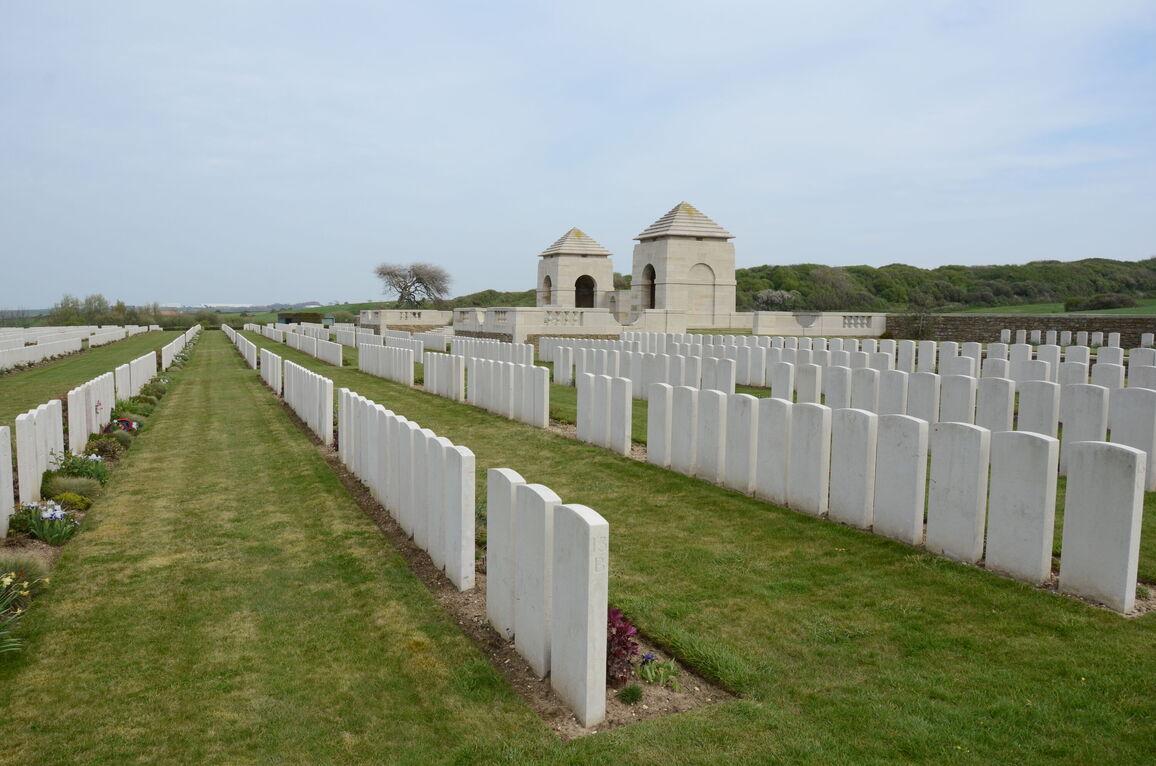Terlincthun British Cemetery, Wimille
- Country France
- Total identified casualties 3881 Find these casualties
- Region Pas de Calais
- Identified casualties from First & Second World War
- GPS Coordinates Latitude: 50.74393, Longitude: 1.61023
Location information
Terlincthun British Cemetery is situated on the northern outskirts of Boulogne.
From Calais follow the A16 to Boulogne, come off at Junction 32 and follow the D96E for Wimereux Sud. Continue on this road for approximately 1 kilometre when the Cemetery will be found on the left hand side of the road. However, it should be noted that the entrance to the cemetery is in St Martin's Road, which is the road on the left immediately after the cemetery.
Visiting information
PLEASE NOTE, we have received a number of reports of thefts from vehicles in this area, so please ensure that no valuables are left on display and that your car is locked when visiting the cemetery.
Wheelchair access to this site possible, but may be by an alternative entrance. For further information regarding wheelchair access, please contact our Enquiries Section on 01628 507200
History information
The first rest camps for Commonwealth forces were established near Terlincthun in August 1914 and during the whole of the First World War, Boulogne and Wimereux housed numerous hospitals and other medical establishments.
The cemetery at Terlincthun was begun in June 1918 when the space available for service burials in the civil cemeteries of Boulogne and Wimereux was exhausted. It was used chiefly for burials from the base hospitals, but Plot IV Row C contains the graves of 46 RAF personnel killed at Marquise in September 1918 in a bombing raid by German aircraft.
In July 1920, the cemetery contained more than 3,300 burials, but for many years Terlincthun remained an 'open' cemetery and graves continued to be brought into it from isolated sites and other burials grounds throughout France where maintenance could not be assured.
During the Second World War, there was heavy fighting in the area in 1940. Wimille was devastated when, from 22 - 25 May, the garrison at Boulogne fought a spirited delaying action covering the withdrawal to Dunkirk. There was some fighting in Wimille again in 1944. The cemetery suffered considerable damage both from the shelling in 1940 and during the German occupation.
The cemetery now contains 4,378 Commonwealth burials of the First World War and more than 200 war graves of other nationalities, most of them German. Second World War burials number 149.
The cemetery was designed by Sir Herbert Baker.








